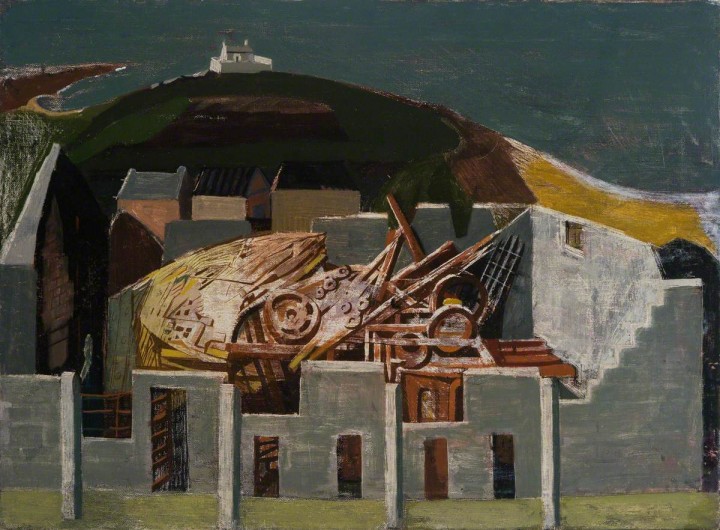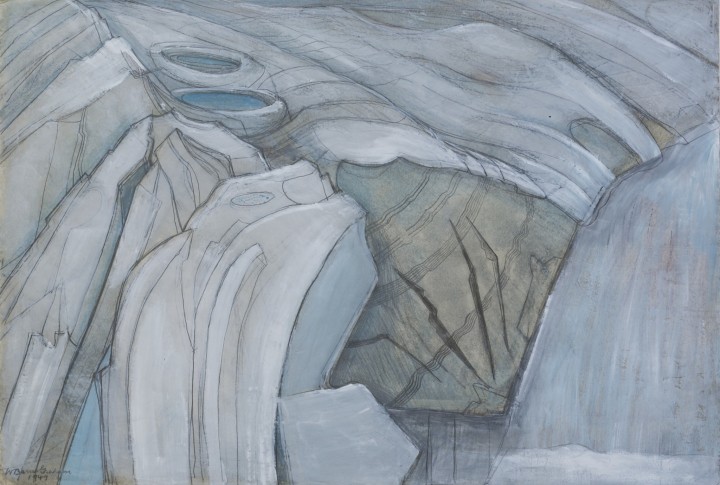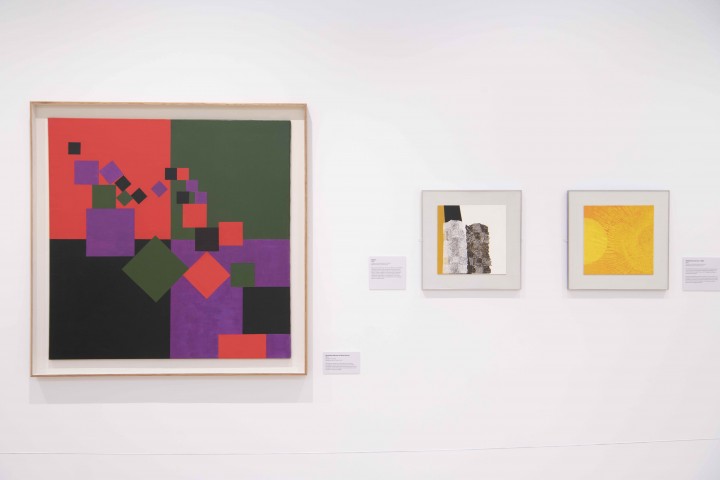Scottish Art News
Latest news
Magazine
News & Press
Publications
Wilhelmina Barns-Graham: Paths to Abstraction
By Susan Mansfield, 28.02.2023

The largest exhibition of Wilhemina Barns-Graham’s work in 30 years has opened at Newcastle University’s Hatton Gallery. The show carefully charts the development of the first half of the artist’s long career, as she moved from landscape painting to abstraction. Susan Mansfield reviews.
How an artist’s legacy is managed in the decades immediately after their death can make a crucial difference to their reputation. When Wilhelmina Barns-Graham died in 2004, she left several hundred paintings to the Wilhelmina Barns-Graham Trust, which is now working proactively to build on the recognition she had during her life as a pioneering Scottish artist.
This exhibition, at Newcastle University’s Hatton Gallery, is the largest show of Barns-Graham’s work for 30 years, a careful survey of the first half of her long career in which she moved from landscape painter to fully fledged abstractionist. Moving from room to room, we witness her development as a painter unfolding before our eyes.
Barns-Graham, who grew up in St Andrews, graduated from Edinburgh College of Art (ECA) in 1937. Stirrings of war prevented her taking up travel scholarships to Europe and she was instead encouraged to spend time in St Ives where the artists of the British avant-garde were working. She stayed for more than a decade, maintaining a studio there far longer, working alongside artists such as Barbara Hepworth, Ben Nicholson and Naum Gabo.
The earliest works in the show were painted at ECA, showing that, by her early twenties, she was already a talented and interesting landscape painter. She continued to paint landscapes in St Ives, but was pushing out in new directions: a view of the harbour at night seems to layer different perspectives; in ‘Box Factory Fire’ (1948) she paints the interior of the burnt out factory as a collapsed pile of abstract shapes in an otherwise conventional landscape.
 Wilhemina Barns-Graham, Glacier (1949) courtesy of The Barns-Graham Charitable Trust
Wilhemina Barns-Graham, Glacier (1949) courtesy of The Barns-Graham Charitable Trust
In 1949, after visiting the Grindelwald glacier in Switzerland, her exploration of inside and outside intensified. She drew and painted the external forms of ice repeatedly, but also looked into and through them. No longer painting only what she saw, she was exploring what might be achieved by abstracting the forms, how to paint a “total experience”.
 Wilhemina Barns-Graham, Snow At Wharfdale II (1957) courtesy of the Wilhemina Barns-Graham Trust
Wilhemina Barns-Graham, Snow At Wharfdale II (1957) courtesy of the Wilhemina Barns-Graham Trust
In the years immediately after Switzerland, Barns-Graham became an abstract painter, depicting the glacier and rock forms in Cornwall, then leaving representation behind to focus on the shapes themselves. It was not a linear transformation. ‘Snow at Wharfdale’, painted in Yorkshire in 1957, is still a landscape, albeit a geometry of fields and dry-stone walls. The same year, however, she painted ‘Red Painting’, an uneasy, fractured abstract, perhaps depicting the internal landscape of a time of loss and upheaval.
By the 1960s, she was working in a purer geometric abstraction, using simple shapes such as squares and circles to explore relationships between forms. She created mosaics of cut-out paper squares and painted them slightly out of line to suggest movement. Her earlier palette of greys and browns brightened with primary colours.
 Wilhemina Barns-Graham, A Path To Abstraction at The Hatton Gallery. Photo by Colin Davison. (Ascending Squares of Equal Amount, 1970 to the left)
Wilhemina Barns-Graham, A Path To Abstraction at The Hatton Gallery. Photo by Colin Davison. (Ascending Squares of Equal Amount, 1970 to the left)
Her energy and determination shines out of these paintings. Not everything works: ‘Ascending Squares of Equal Amounts’, (1970) a laboriously mathematical geometric composition, is accomplished but rather lifeless and seems to have been, artistically, a bit of a dead end. The freer, more painterly abstracts pre-figure the assured, free-flowing quality of her late work.
These 70 paintings offer an unparalleled insight into Barns-Graham’s artistic journey, the only sadness being that it stops halfway through. The journey itself continued for the next 30 years, including a remarkable late flowering. The story will be continued, I’m told, but we must wait a few years for the full picture of this extraordinary artistic life.
Wilhelmina Barns-Graham: Paths to Abstraction is showing at Hatton Gallery until 20th May




